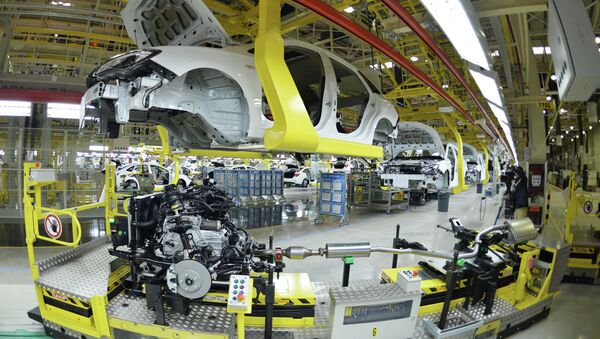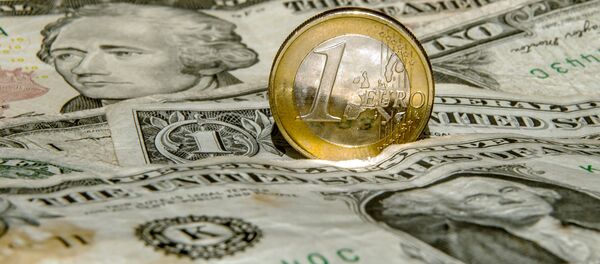Kristian Rouz — As mainland China's real economy falters amidst the lingering downward pressure on financial assets, the world's greatest burden on corporate debt is becoming one of Beijing's most acute concerns. Not so long ago a tool to avoid a full-scale recession, the accumulation of borrowed monetary liquidity is starting to take its toll on the nation's weakening growth. While there is no prospect of a comprehensive readjustment of China's economy towards a model driven by domestic consumption, the continued use of debt-fueled attempts at faster growth may only allow sustaining the shaky status quo until the bubble pops.
The alarming debt situation is a consequence of Beijing's economic policies, first undertaken at the height of the 2008 global crisis. The Chinese government dramatically increased its pace of borrowing in order to sustain comfortable levels of economic expansion, the demographically-determined 8% annualized growth. Up to recent years, the debt-fueled growth tactics worked well for Beijing.
However, as mainland China started losing its dirt-cheap labour competitive edge to the poorer nations of Southern and South-East Asia during the past two or three years, its economic expansion slowed significantly, while the debt accumulation has become an addictive ‘bad medicine' very hard to kick. Moreover, several major bubbles, first in in real estate in 2014, then in stocks in 2015, failed to provide sustainable support to the real economy, having nearly burst if it had not been for the severe administrative measures taken by the government.
Meanwhile, China's enterprises, individual provinces and even the central government continued their excessive borrowing.
While the model of debt-fueled growth had been tested and often implemented in the advanced nations over the past 40 years, its positive impact on economic growth has always been very limited. Debt accumulation provides a stimulus to growth over a short period of time, only some breathing space before painful though necessary structural reforms. The recent experience of the US and certain nations of the EU and emerging markets have shown that positive effects of debt accumulation do not last more than 3-4 years. Subsequently, the US had to sway towards tightening in their economic policies in 2013 after four years of excessive borrowing, while nations of peripheral Europe had to implement macroprudential policies as early as in 2011 after being hit by the crisis in 2009.
"When the credit taps are opened, risks rise that the money is going to 'problematic' companies or entities," Louis Kuijs of RBS said.
While Beijing claims most of its excessive borrowing goes to technological and infrastructure development, there is clearly a significant corruption premium. While China's national currency, the renminbi or ‘yuan', is not a fully convertible one, the pace of issuance in the renminbi-denominated loans is truly terrifying.
In June alone, Chinese banks issued 1.28 trln renminbi ($206 bln) of new loans, which is above that in May, at 900.8 bln renminbi. While Beijing is conducting measures of monetary easing by stimulate issuance of cheaper short-term loans, there is a boom in debt accumulation going on currently. After the popped bubbles in real estate and stocks, the corporate debt is threatening to evolve into another full-blown bubble.
At the same time, China's corporate profits are shrinking as an ever-increasing part of businesses' revenues goes to debt servicing immediately. According to Thomson Reuters data, in 2010 China's commodity enterprises' debts were 2.8 times their profit, while in 2014 the figure jumped to 5.3. In energy sector, debt rose from 1.1 to 4.4 times their profits, in manufacturers, from 2.5 to 4.2 times.
Another big problem is the most of the debt is owned by the inefficient too-big-to-fail companies, meaning debt-pricing in mainland China is severely warped, taking a toll of the overall efficacy of the mainland's staggering economy.
The current trend is, as mainland China's authorities are by all means averting a comprehensive reform, the economic disaster is closer as a debt bubble is the hardest to manage, deflate or eradicate.





